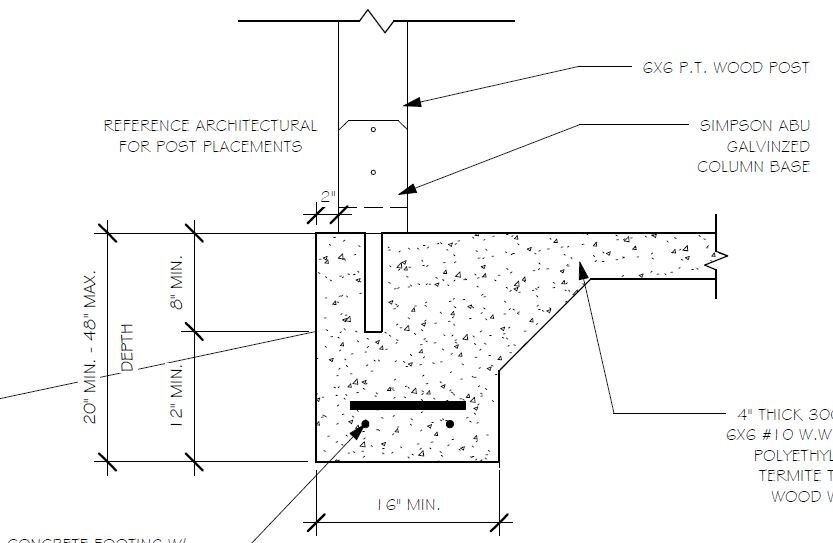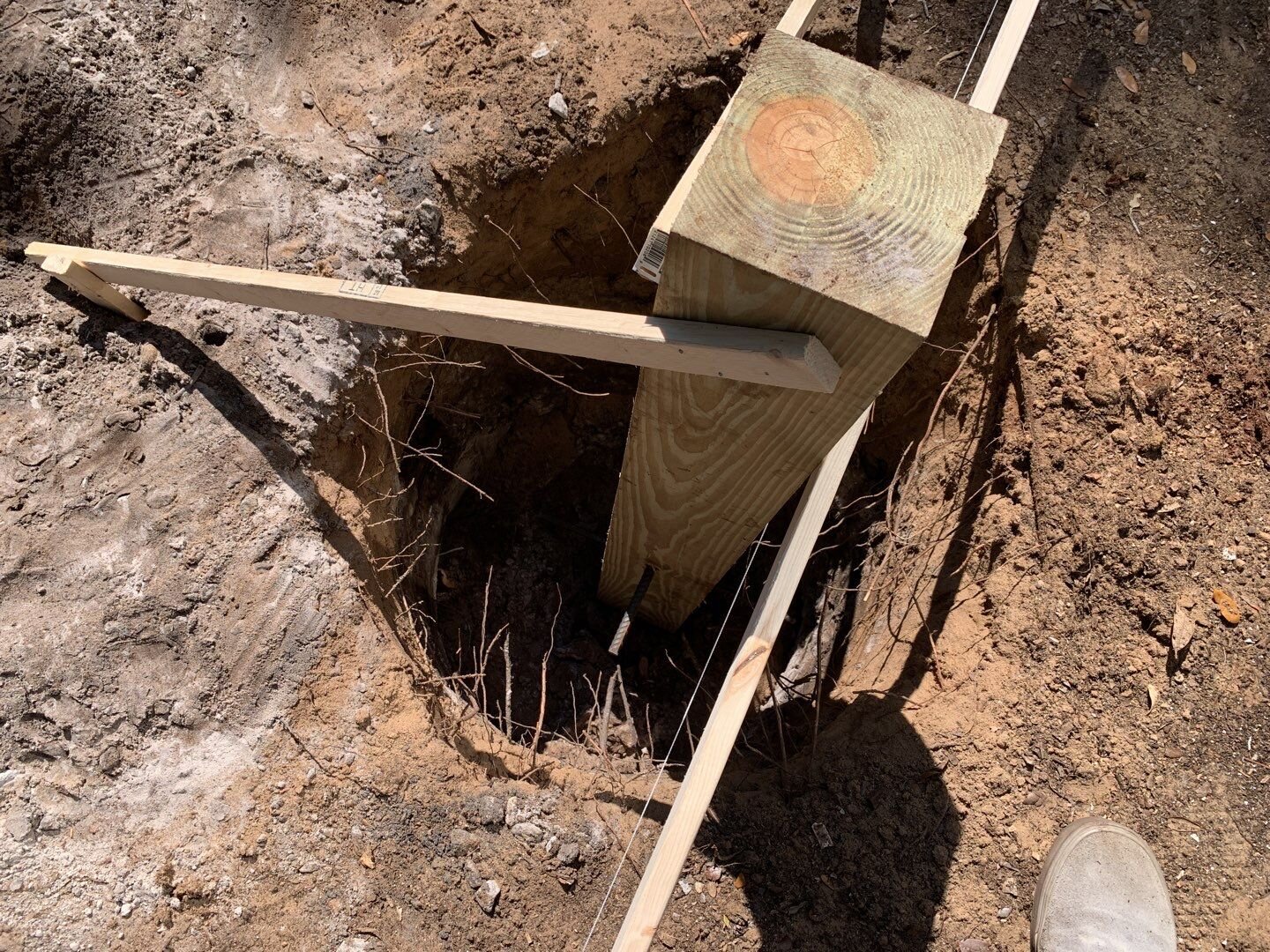Deck Footings 101
Deck Footings 101
hands down the most important part of any deck build is the footing. below we detail the type of footings that are approved by building code in our region.
What is a footing?
A footing is the building block on which any deck must be built. The footing provides a stable foundation for which the deck posts, beams, joists, decking, and rails can be mounted. Its very important that you have a solid footing, because a well-designed deck uses the footing as the means in which the load or weight of the deck is transferred into the ground. This keeps the entire deck safe and secure.
How is the footing made?
Almost always, footings are made by digging a hole in the ground. The diameter and depth of the hole is determined by the load or weight of the deck. A footing can be anywhere from 16” wide x 16” deep to 24” wide x 36” deep and sometimes even larger depending on the size of the deck. The hole is then filled with a 3”-4” layer of gravel for proper drainage. Since overtime the post will shrink, it is important that the base of the hole has gravel in it to allow proper drainage. This allows water to run through the posts, into the gravel, and then drain into the soil. If there was not gravel under the post, the water would pool around the post which could cause the post to rot overtime.
Another important factor of any footing is metal rebar. Rebar is a metal rod that adds structural support to the concrete. The rebar helps strengthen the concrete and makes it stay together as one piece. The size, design and number of rebar pieces that need to be used will be determined by the footing type, size, engineer specifications and/or local building code.
What are my options?
There are many ways to design footings, and each deck will have its own method depending on weight, design, soil type and/or code requirements. Below are two of the most common ways in which we build our deck footings.
First, the more traditional method of building a footing involves drilling a rebar rod through the structural posts in a cross pattern. One rod is drilled through the post at a specified measurement from the bottom, while a second rod is drilled at another specified measurement from the bottom on the opposite side of the post. Once the post has the rebar inserted, it is placed in the hole on a gravel base, and high-strength concrete is poured in to secure it. The rebar rods simply add additional strength to the concrete footing, while also helping to prevent the post from pulling out of the concrete in a strong wind event that may cause a deck uplift.
The second method for building a footing involves a Simpson Strong-Tie bracket. A Simpson Strong-Tie bracket, or often called an ABU, is a metal bracket in the shape of a U that is used instead of the “post-in-the-hole” method mentioned above. Since the same footing prep is required, a hole is dug and gravel is placed in the bottom of the footing. This time though instead of putting the post with rebar in before the concrete is poured, no post is placed in the footing and the concrete is poured into the hole up to ground level. If needed for additional support or specified by the local code or engineer, rebar may be added in the hole prior to the concrete pour as well. Once the concrete is dry, a special concrete bit is used to drill a hole into the top of the new concrete. From there, a large concrete bolt or threaded rod with epoxy is used to attach the ABU bracket to the concrete surface. Once the ABU bracket is attached firmly to the concrete, the deck post is placed into the U of the bracket. Then structural nails or screws are used to fasten the bracket to the post. Using the ABU bracket method for footings allows for any water to have a method of draining as well. The bracket has a 1” thick metal plate that goes over the bolt or threaded rod for the post to sit on which raises the post to where it does not have direct contact with the concrete. This therefore lets any water drain away from the post and prevents standing water which can cause a post to rot overtime.
In Conclusion:
As you can see there are different ways to build footings for your deck. It is key that the right type of footing is chosen for not only the longevity of your deck, but most importantly, the safety of your deck. Give us a call today for a free deck inspection and one of our Project Managers will be happy to walk you through footing options, as well as other deck components.









